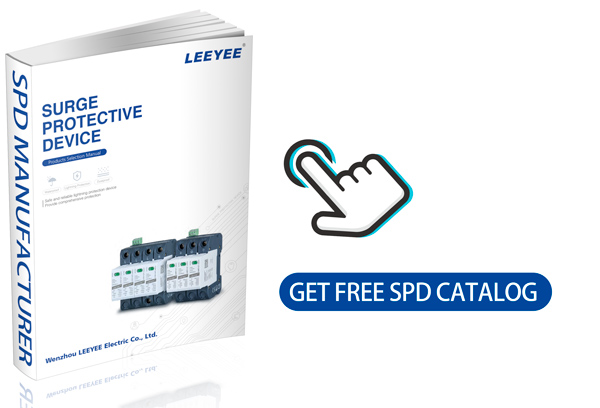Electrical surges can wreak havoc on your equipment, leading to costly repairs or replacements. Using the wrong surge arrester can intensify these risks, resulting in inadequate protection. Understanding the compatibility of surge arresters is essential for safeguarding your devices effectively.
Using a 3-phase surge arrester on a single-phase system is possible, but it requires careful consideration. Proper installation and understanding of electrical systems ensure optimal protection against voltage spikes.
Let’s explore the differences between single-phase and three-phase systems, the implications of using a 3-phase surge arrester on a single-phase setup, and the best practices for ensuring effective protection.
Table of Contents
Understanding Single-Phase and Three-Phase Systems
Before diving into surge arresters, it’s crucial to understand the basics of single-phase and three-phase electrical systems.
Single-Phase Systems
A single-phase system consists of one alternating current (AC) waveform and is commonly used in residential settings. It typically delivers power at a voltage of 120V or 240V, depending on the region. Single-phase systems are ideal for household appliances, lighting, and small motors. However, they may not handle heavy loads as efficiently as three-phase systems.
Three-Phase Systems
Conversely, a three-phase system uses three AC waveforms, resulting in a more balanced and efficient power delivery. This system is prevalent in industrial and commercial applications where large motors and heavy machinery require significant power. Three-phase systems provide smoother operation and reduced voltage drops, making them suitable for high-demand environments.
Understanding these differences helps clarify why surge protection varies between the two types of systems.
Benefits of Using a Surge Arrester
Surge arresters protect electrical equipment from voltage spikes caused by lightning, switching operations, and other electrical disturbances. They redirect excess voltage away from sensitive devices, preventing potential damage.
1. Enhanced Equipment Longevity
Using a surge arrester can significantly extend the lifespan of your electrical devices. By absorbing excess energy, these devices minimize wear and tear, reducing the likelihood of failures.
2. Cost Savings
Investing in surge protection can save you money in the long run. Preventing damage to valuable equipment reduces repair costs and downtime, ensuring continuous operation.
3. Improved Safety
Surge arresters enhance the overall safety of electrical systems. By preventing voltage spikes, they reduce the risk of electrical fires and other hazards associated with power surges.
Can You Use a 3-Phase Surge Arrester on a Single-Phase System?
Yes, you can use a 3-phase surge arrester on a single-phase system, but a few important considerations must be addressed.
1. Compatibility
While a 3-phase surge arrester can provide protection, it may not operate at optimal efficiency in a single-phase setup. The device may be designed to handle three distinct phases, and using it on a single-phase system might lead to uneven distribution of protection.
2. Installation Requirements
Proper installation is crucial when using a 3-phase surge arrester on a single-phase system. It’s essential to connect the device correctly to ensure it functions effectively. Consult an electrical professional to ensure compatibility and correct installation.
3. Performance
A 3-phase surge arrester may not provide maximum protection for a single-phase system. The surge protection capabilities might be diminished, leading to potential vulnerabilities. If you decide to use a 3-phase device, ensure it has a suitable joule rating to handle surges in your specific application.
Best Practices for Surge Protection
To ensure effective surge protection, consider the following best practices:
1. Assess Your Needs
Evaluate the specific requirements of your electrical system. Determine whether you genuinely need a 3-phase surge arrester or if a dedicated single-phase device would suffice.
2. Consult Professionals
Engaging with a qualified electrician can help clarify the compatibility of different surge arresters. They can provide valuable insights into the best protection methods for your system.
3. Choose the Right Device
If you opt for a 3-phase surge arrester, ensure it is compatible and has an appropriate joule rating. Look for devices with features that cater to your specific needs, such as LED indicators for protection status.
4. Regular Maintenance
Conduct regular checks on your surge protection devices to ensure they remain functional. Over time, arresters can degrade, and their protective capabilities may diminish.
Conclusion
In summary, while it is possible to use a 3-phase surge arrester on a single-phase system, careful consideration is necessary. Understanding the differences between single-phase and three-phase systems, assessing compatibility, and ensuring proper installation are vital for effective surge protection.
Investing in the right surge protection not only safeguards your valuable equipment but also enhances the safety and reliability of your electrical system. By following best practices and consulting with professionals, you can make informed decisions that protect your devices from damaging voltage spikes.
About LEEYEE:
Established in 2009, LEEYEE is a specialized manufacturer of surge protective devices (SPDs). We own the certificates of CE, CB, ISO9001, and TUV. In addition, we support customization options for color appearance, parameters, and logos. Welcome to consult for product catalogs and inquiries, you can contact us via email at devin@cnspd.com.

